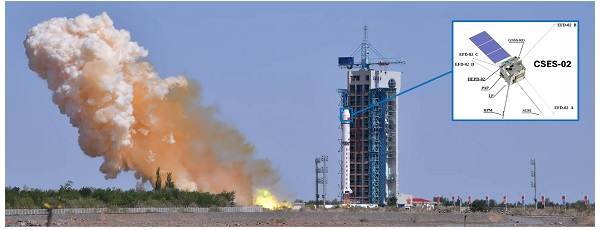On June 14, 2025, the CSES-02 (China Seismo-Electromagnetic Satellite) was successfully launched from the Jiuquan Satellite Launch Center. This is the second satellite in the CSES series and is the result of a collaboration between the Italian Space Agency (ASI) and the China National Space Administration (CNSA). A broad Italian scientific community is involved in the mission, working within the framework of the Limadou collaboration, which includes ASI, INFN, INAF, INGV, CNR, and the universities of L’Aquila, Bologna, Rome Tor Vergata, Naples, Turin, Trento, as well as the UniNettuno telematic University.
The launch can be viewed from different angles at the following links:
At the heart of CSES-02 is a particle detector, the HEPD-02 (High Energy Particle Detector), developed through a multi-year effort that also involved the INFN Bologna Division. Specifically, the scintillation counters of HEPD-02 were designed, prototyped, tested, and built at this INFN site. The scintillation counter system measures the energy of incoming particles and identifies their nature. In addition, the Bologna Division contributed to the integration, space qualification, and beam testing of both the qualification and flight detectors.
The HEPD-02 detector was successfully switched on today, June 20, 2025, at 07:50 AM (Italian time), and is operating nominally. This marks the culmination of years of dedicated work and the official start of the data acquisition phase. The data collected by HEPD-02 will be crucial for the detailed study of low-energy galactic cosmic rays, for conducting space weather research, and for the search for particle signals potentially associated with seismic activity on Earth.
Further information:


